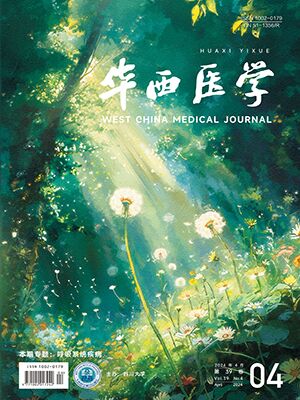【摘要】 目的 分析异基因造血干细胞移植术(allogeneic hematopoietic stem cell transplantation,allo-HSCT)后并发毛细血管渗漏综合征(capillary leak syndrome,CLS)的发生率、危险因素和结局,并探讨其防治措施。 方法 回顾性分析2005年6月-2011年2月住院的allo-HSCT术后14例并发CLS的临床资料。 结果 CLS发生率为9.2%(14/152)。年龄、性别、诊断、HLA配型、预处理、CD34+细胞量、粒细胞集落刺激因子(granulocyte colony-stimulating factor,G-CSF)用量、植入时间均不能认定为造血干细胞移植后CLS诱发因素。 结论 HSCT术后CLS诱因尚不清楚,采用限水、减量G-CSF、使用糖皮质激素和羟乙基淀粉等措施及时治疗,有助于控制CLS。
【Abstract】 Objective To study the occurrence rate, risk factors and outcomes of capillary leak syndrome (CLS) after allogeneic hematopoietic stem cell transplantation (allo-HSCT), and discuss its prevention and treatment. Methods We retrospectively analyzed the clinical records of 14 allo-HSCT recipients complicated with CLS from June 2005 to February 2011. Results Fourteen out of 152 patients developed CLS with a cumulative incidence of 9.2 %. None of the 8 clinical parameters including age, gender, underlying disease, donor type, conditioning regimen, CD34+ cell dose, granulocyte colony-stimulating factor (G-CSF) dosage, and days to neutrophil engraftment could be identified as risk factors for the occurrence of CLS. Conclusions Risk factors for CLS after allo-HSCT have not been fully established. Restriction of water intake, administration of corticosteroids and hydroxyethyl starch can be beneficial for patients with CLS.
Citation: CHEN Xinchuan,LIU Ting,JIA Yongqian,LIU Zhigang,DAI Yang,LI Jianjun. Clinical Characteristics of and Risk Factors for Capillary Leak Syndrome after Allogeneic Hematopoietic Stem Cell Transplantation. West China Medical Journal, 2011, 26(12): 1774-1779. doi: Copy




